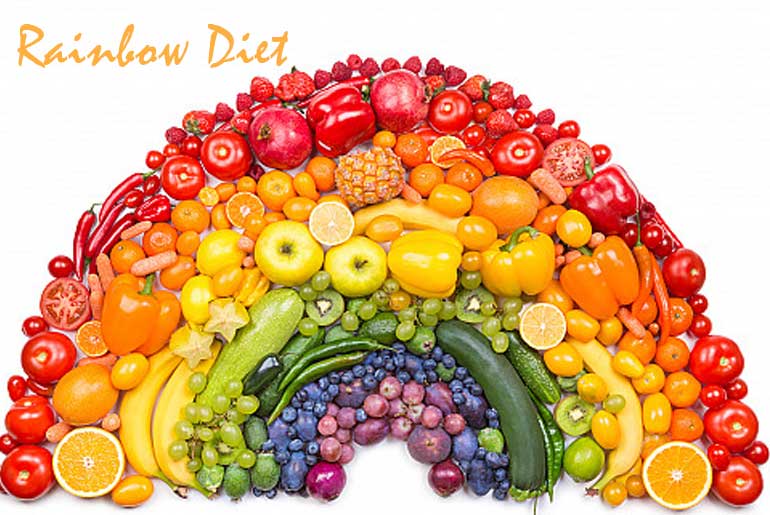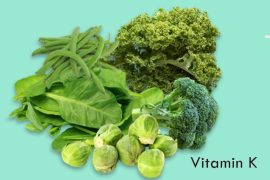The rainbow diet emphasizes incorporating a variety of colorful fruits and vegetables into your meals, each color providing unique nutritional benefits. This approach not only makes meals visually appealing but also supports overall health by delivering essential vitamins, antioxidants, and minerals. It can enhance immunity, reduce inflammation, and promote heart health.
Rainbow Diet:
The rainbow diet refers to a meal plan focused on incorporating a wide variety of colorful fruits and vegetables into your daily meals. The idea is that different colors in foods represent various nutrients, antioxidants, and phytochemicals essential for overall health. By consuming a “rainbow” of foods—such as red tomatoes, orange carrots, yellow peppers, green spinach, blueberries, and purple eggplant—you can ensure a broad range of vitamins and minerals, which support immunity, heart health, and cognitive function.
Why is the Rainbow Diet Beneficial?
The “rainbow diet” refers to consuming a variety of colorful fruits and vegetables that represent different nutrients essential for good health. Each color in these foods provides unique vitamins, minerals, and antioxidants that support various bodily functions. Here are some of the key benefits:
- Rich in Antioxidants: The different colors in fruits and vegetables often indicate the presence of specific antioxidants. For example, red foods like tomatoes are rich in lycopene, which supports heart health, while orange and yellow foods like carrots are rich in beta-carotene, which supports eye health.
- Boosts Immune Function: Colorful fruits and vegetables like berries, citrus fruits, and leafy greens are packed with vitamins such as Vitamin C and A, which help strengthen the immune system and fight off infections.
- Supports Heart Health: The rainbow diet includes foods that are rich in fiber, potassium, and antioxidants that reduce inflammation and lower blood pressure, promoting cardiovascular health.
- Improves Digestion: Many colorful foods are high in fiber, which aids in digestion and helps maintain a healthy gut. Fibrous vegetables like greens, beans, and whole grains support bowel regularity and prevent constipation.
- Reduces Cancer Risk: The antioxidants and phytochemicals found in colorful fruits and vegetables may protect cells from oxidative damage, reducing the risk of certain types of cancers.
- Promotes Skin Health: Vitamins and antioxidants from colorful foods help protect the skin from damage, improve collagen production, and slow the aging process.
How to Start Eating the Rainbow Every Day
- Plan Colorful Meals: When planning your meals, think about including a variety of colors on your plate. For example, start your day with a smoothie that includes berries (purple), spinach (green), and carrots (orange), or make a salad with tomatoes (red), peppers (yellow), and cucumbers (green).
- Snack on Color: Choose colorful snacks like carrot sticks, bell peppers, apples, or grapes. Keeping pre-cut fruits and veggies in the fridge can make healthy snacking easier.
- Experiment with Different Fruits and Vegetables: Try to incorporate different fruits and vegetables each week. This ensures you are getting a wide range of nutrients and also keeps meals exciting.
- Use Herbs and Spices: Add color and flavor to your meals with natural herbs and spices like turmeric (yellow), paprika (red), and parsley (green), which also come with their own health benefits.
- Choose Whole Foods: Opt for whole fruits and vegetables rather than processed or refined foods, which tend to lose their nutrients. Fresh, frozen, or lightly cooked options retain the most vitamins and minerals.
Is the Rainbow Diet Sustainable?
Yes, the rainbow diet is sustainable in several ways:
- Easy to Adapt: Since it focuses on eating a wide variety of whole, plant-based foods, the rainbow diet is flexible and can be adapted to individual preferences, cultural habits, and seasonal availability. It’s a simple guideline that encourages balance without being restrictive.
- Supports Long-Term Health: Consistently consuming nutrient-dense foods from a wide color spectrum helps maintain overall health, reducing the risk of chronic diseases such as diabetes, heart disease, and cancer. This makes it a sustainable diet for long-term well-being.
- Eco-Friendly: The rainbow diet often emphasizes plant-based foods, which generally have a lower environmental impact compared to animal-based diets. By consuming seasonal and locally grown fruits and vegetables, you can also reduce your carbon footprint.
- Affordable and Accessible: While exotic fruits and vegetables can be expensive, many rainbow-colored foods, such as apples, spinach, carrots, and tomatoes, are affordable and widely available. Shopping for seasonal produce can further reduce costs.
By incorporating a variety of colorful foods into your diet, not only will you receive a wide range of nutrients, but you’ll also enjoy meals that are both visually appealing and beneficial for long-term health.
Disclaimer:
The information contained in this article is for educational and informational purposes only and is not intended as a health advice. We would ask you to consult a qualified professional or medical expert to gain additional knowledge before you choose to consume any product or perform any exercise.







